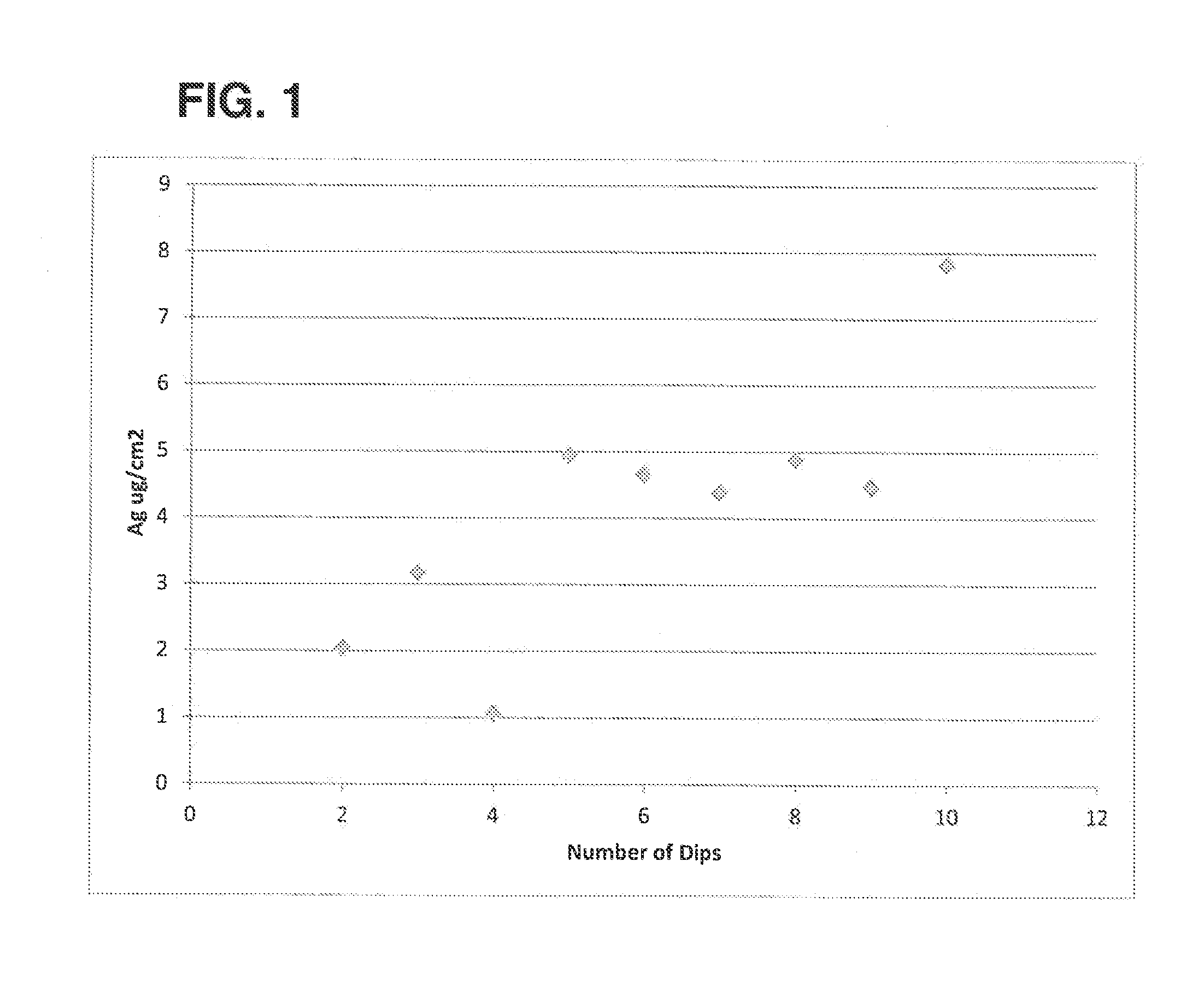Method of Selectively Applying an Antimicrobial Coating to a Medical Device or Device Material
a medical device or device material technology, applied in the field of silver nanoparticle mixtures, can solve the problems of difficult implementation of dipping processes for coating agents, inability to adapt methods to continuous or in-line processes, and relatively uncontrollable process and variable process
- Summary
- Abstract
- Description
- Claims
- Application Information
AI Technical Summary
Benefits of technology
Problems solved by technology
Method used
Image
Examples
example 1
Selective Spray Deposition on Polytetrafluoroethylene (PTFE)
[0034]It was desired to deposit nanosilver selectively to the outside diameter of a tubular structure. A spray deposition technique was developed to deposit silver in such a manner as to uniformly apply a coating on the outside of the tubular expanded PTFE or ePTFE (expanded polytetrafluoroethylene is available from W.L. Gore & Associates) material while leaving the inside diameter completely free of silver. The ePTFE graft material treated in this example was a hollow tube with an internal diameter of 6 mm and a length of up to 44 inches. The uniform application of the nanosilver was accomplished by rotating the tubular material on a mandrel that spans the length of the tubular structure. Referring to FIG. 2 of the drawings, there is shown a schematic drawing of an automated apparatus 10 for spraying the length of a tubular structure uniformly. The apparatus includes a base 12, a track 14 for a spray head 16 that can move ...
example 2
Selective Nanosilver Deposition onto Paper and Other Materials by Brushing or Dripping
[0060]Paper of various constructions, including notebook paper, cardboard, particulates, was treated with nanosilver by dripping a mixture of an organic solvent and suspended nanoparticles onto a selected surface of material. This was conducted using chloroform, toluene, and heptane as the solvent or combinations thereof and nanosilver as the nanoparticles. The volatile nature of these solvents allows the solvent to evaporate before the untreated side of the substrate is saturated and therefore allows silver to be deposited only on one side of the paper. This method was also performed on materials made with polyethylene, polystyrene, Styrofoam (using only heptanes), polypropylene, wood, cotton (such as a gauze material), and polycarbonate. The advantage of solvent based nanosilver deposition is the rapid nature of the deposition time and the selectivity of the treatment method to render materials a...
PUM
| Property | Measurement | Unit |
|---|---|---|
| viscosity | aaaaa | aaaaa |
| diameter | aaaaa | aaaaa |
| diameter | aaaaa | aaaaa |
Abstract
Description
Claims
Application Information
 Login to View More
Login to View More - R&D
- Intellectual Property
- Life Sciences
- Materials
- Tech Scout
- Unparalleled Data Quality
- Higher Quality Content
- 60% Fewer Hallucinations
Browse by: Latest US Patents, China's latest patents, Technical Efficacy Thesaurus, Application Domain, Technology Topic, Popular Technical Reports.
© 2025 PatSnap. All rights reserved.Legal|Privacy policy|Modern Slavery Act Transparency Statement|Sitemap|About US| Contact US: help@patsnap.com



